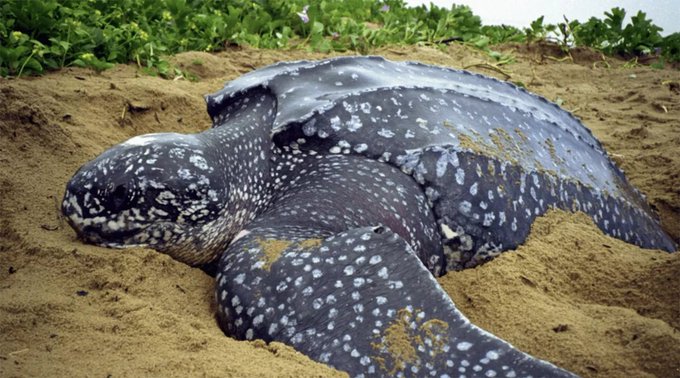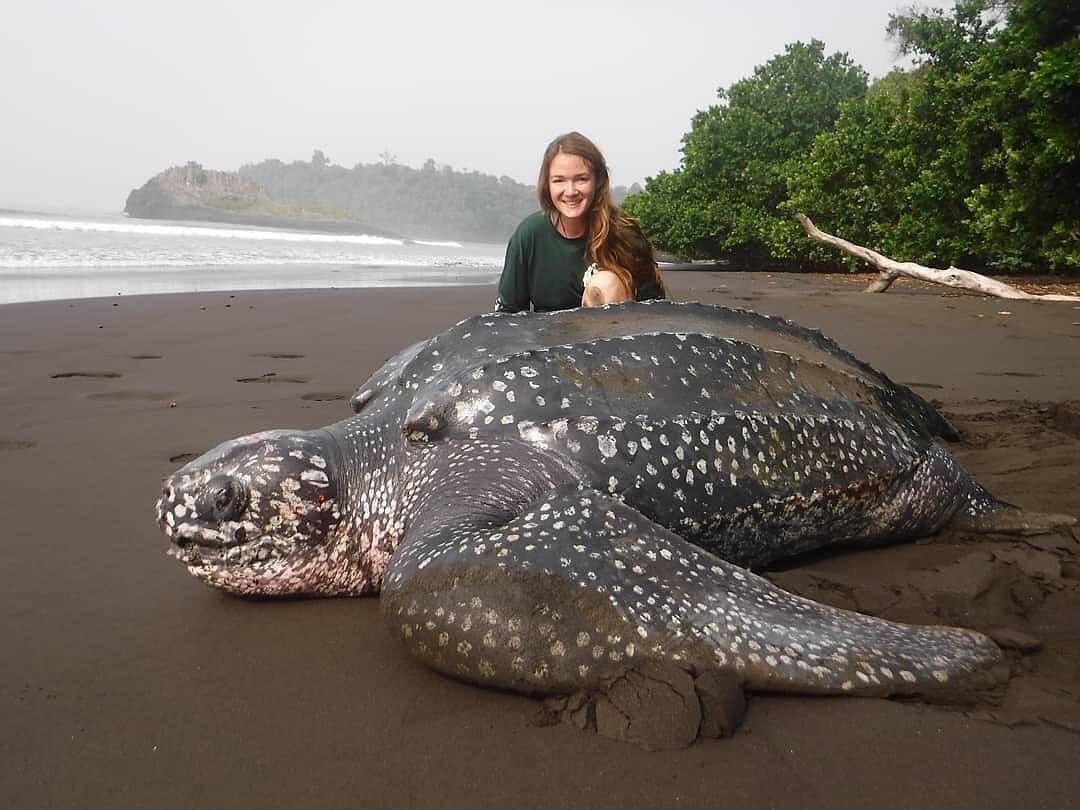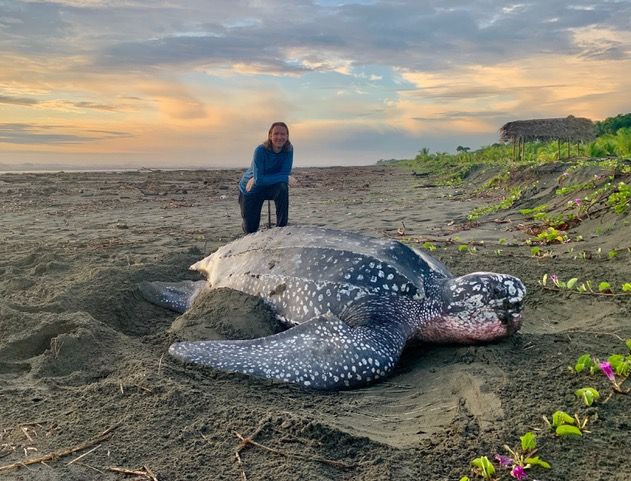In the early hours of the morning, as the sun began to rise over the tranquil shores of Equatorial Guinea, a remarkable sight unfolded. A leatherback sea turtle, a creature that has traversed the oceans for millions of years, lay motionless on the sand. Her immense, ridged shell, nearly six feet in length, was dusted with sand and debris from the surrounding jungle. But it wasn’t her size that caught the attention of the conservation team—it was her stillness.
The turtle had ventured ashore to nest, a behavior she had performed countless times throughout her life. However, something had gone awry. Perhaps disoriented or frightened, she had strayed too far inland and became trapped between the base of a gnarled tree and the dense jungle brush. One of her flippers, slick with blood, was twisted against the bark, and her skin, usually dark and smooth, had turned an alarming shade of pink from prolonged exposure to the tropical sun. Her eyes, vacant and glassy, stared into nothingness.
Alone, she would not have survived. The heat, the injury, and the exhaustion were too much. But she wasn’t alone anymore.
A team of dedicated conservationists, part of a local monitoring effort, spotted her just in time. Without hesitation, they sprang into action. One ran to fetch water, another knelt beside her, whispering words of comfort. They gently doused her scorched skin with saltwater, the cool liquid creating clouds of steam as the heat lifted. Others worked tirelessly to clear the path, shifting the tree and moving earth with their bare hands.
She didn’t fight them. She couldn’t. But when the obstruction was finally removed and her flipper freed, something changed. She moved. First, a twitch. Then a deep, shuddering breath. Slowly, agonizingly slowly, she began to push herself forward, inching her massive body across the sand. And then, with a final heave, the waves reached her. Salt met skin. Movement returned. Strength returned. In a flash of foam and power, she disappeared back into the sea that had shaped her ancestors for over 100 million years.
The Importance of Leatherback Sea Turtles
Leatherback sea turtles (Dermochelys coriacea) are the largest of all sea turtle species, with some individuals reaching over six feet in length and weighing up to 2,000 pounds. Unlike other sea turtles, their shells are not hard but leathery, providing flexibility and buoyancy. These ancient mariners have been navigating the world’s oceans for more than 100 million years.
Equatorial Guinea’s Bioko Island serves as a critical nesting ground for leatherbacks. The island’s southern beaches provide essential nesting habitats, making it one of the most important sites for leatherback conservation in the Gulf of Guinea
Threats Facing Leatherback Sea Turtles
Despite their impressive size and resilience, leatherback sea turtles face numerous threats, many of which are human-induced:
Bycatch in Fisheries: Leatherbacks often become accidentally entangled in fishing nets and lines, leading to drowning

Plastic Pollution: Mistaking plastic debris for jellyfish, their primary food source, leatherbacks ingest harmful materials, leading to blockages and internal injuries
Coastal Development: The construction of resorts and other structures on nesting beaches disrupts turtle nesting behavior and can lead to hatchling disorientation due to artificial lighting
Climate Change: Rising temperatures affect the sex ratios of hatchlings, as the temperature of the sand determines the sex of the offspring. Warmer sands produce more females, potentially leading to population imbalances
Conservation Efforts in Equatorial Guinea
Recognizing the importance of protecting these ancient creatures, various conservation initiatives have been established in Equatorial Guinea:
Monitoring and Research: Organizations conduct regular surveys and research to monitor nesting sites and gather data on turtle
Community Engagement: Local communities are educated about the importance of sea turtles, and programs are implemented to reduce poaching and egg harvesting.
Protected Areas: Designated marine protected areas help safeguard critical habitats from destructive human activities
NOAA Institutional Repository
.
A Call to Action
The rescue of the leatherback sea turtle on the shores of Equatorial Guinea serves as a poignant reminder of the fragility of our planet’s ecosystems. It underscores the importance of individual actions and collective efforts in preserving biodiversity.
As stewards of the Earth, it is our responsibility to protect these magnificent creatures and their habitats. Supporting conservation organizations, reducing plastic consumption, and advocating for policies that protect marine life are just a few ways we can make a difference.
Let the story of the rescued leatherback inspire us all to take action, ensuring that future generations can witness the awe-inspiring journey of these ancient mariners.

